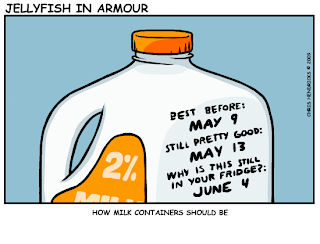Starting in November, the Canadian food packaging industry will tackle food waste.
Canadian-based, though North American in scope, The Packaging Association (PAC) announced plans on Monday to seek food waste solutions through packaging. Citing the global scope of waste (1/3 of global food wasted), PAC’s board of directors will launch the PAC Food Waste Initiative.
Here’s PAC Chairman Bruce Smith, of Molson Coors:
There are opportunities to reduce food waste through packaging improvements throughout the supply chain. PAC wants to investigate the causes, identify opportunities for innovation, extend product shelf life, and inform and educate to the broader community.
 The initiative will launch despite that slight sustainability tension between food packaging and food waste. Minimizing packaging and damaged food are usually at odds, but I’m hopeful some potential double solutions will arise.
The initiative will launch despite that slight sustainability tension between food packaging and food waste. Minimizing packaging and damaged food are usually at odds, but I’m hopeful some potential double solutions will arise.
Then again, there are some packaging improvements in the works. And PAC could do a lot worse than this UK campaign promoting packaging’s role in combating food waste.
Regardless, the initiative will likely support research on waste, publish findings and distribute suggested solutions. PAC hopes interested parties from all parts of the food chain will participate in the program, which launches at PAC’s November 14th meeting.

 The concept is interesting because it could provide a novel way to avoid having too many leftovers. You prepare and/or eat a meal, determine how much excess you”ll have, then put that up for sale. It could reduce waste, at least in theory.
The concept is interesting because it could provide a novel way to avoid having too many leftovers. You prepare and/or eat a meal, determine how much excess you”ll have, then put that up for sale. It could reduce waste, at least in theory.


